
The cell is the basic structural and functional unit of all forms of life. Every cell consists of cytoplasm enclosed within a membrane; many cells contain organelles, each with a specific function. The term comes from the Latin word cellula meaning 'small room'. Most cells are only visible under a microscope. Cells emerged on Earth about 4 billion years ago. All cells are capable of replication, protein synthesis, and motility.

A cell wall is a structural layer that surrounds some cell types, found immediately outside the cell membrane. It can be tough, flexible, and sometimes rigid. Primarily, it provides the cell with structural support, shape, protection, and functions as a selective barrier. Another vital role of the cell wall is to help the cell withstand osmotic pressure and mechanical stress. While absent in many eukaryotes, including animals, cell walls are prevalent in other organisms such as fungi, algae and plants, and are commonly found in most prokaryotes, with the exception of mollicute bacteria.
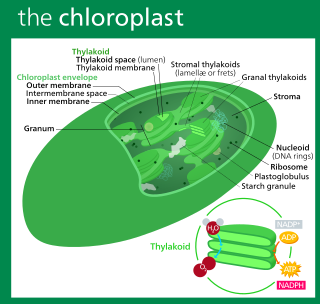
A chloroplast is a type of membrane-bound organelle known as a plastid that conducts photosynthesis mostly in plant and algal cells. The photosynthetic pigment chlorophyll captures the energy from sunlight, converts it, and stores it in the energy-storage molecules ATP and NADPH while freeing oxygen from water in the cells. The ATP and NADPH is then used to make organic molecules from carbon dioxide in a process known as the Calvin cycle. Chloroplasts carry out a number of other functions, including fatty acid synthesis, amino acid synthesis, and the immune response in plants. The number of chloroplasts per cell varies from one, in unicellular algae, up to 100 in plants like Arabidopsis and wheat.

A hormone is a class of signaling molecules in multicellular organisms that are sent to distant organs or tissues by complex biological processes to regulate physiology and behavior. Hormones are required for the correct development of animals, plants and fungi. Due to the broad definition of a hormone, numerous kinds of molecules can be classified as hormones. Among the substances that can be considered hormones, are eicosanoids, steroids, amino acid derivatives, protein or peptides, and gases.

An action potential occurs when the membrane potential of a specific cell rapidly rises and falls. This depolarization then causes adjacent locations to similarly depolarize. Action potentials occur in several types of excitable cells, which include animal cells like neurons and muscle cells, as well as some plant cells. Certain endocrine cells such as pancreatic beta cells, and certain cells of the anterior pituitary gland are also excitable cells.

San Quentin Rehabilitation Center (SQ), formerly known as San Quentin State Prison, is a California Department of Corrections and Rehabilitation state prison for men, located north of San Francisco in the unincorporated place of San Quentin in Marin County.

Nystatin, sold under the brand name Mycostatin among others, is an antifungal medication. It is used to treat Candida infections of the skin including diaper rash, thrush, esophageal candidiasis, and vaginal yeast infections. It may also be used to prevent candidiasis in those who are at high risk. Nystatin may be used by mouth, in the vagina, or applied to the skin.
June McCarroll is credited by the California Department of Transportation with the idea of delineating highways with a painted line to separate lanes of highway traffic, although this claim is disputed by the Federal Highway Administration and the Michigan Department of Transportation as two Michigan men painted centerlines before her. She was born in Lewis County, New York. She was a nurse with the Southern Pacific Railroad in the early 20th century. According to a historic marker in Indio, California, after a near-collision in her Model T in 1917, "She personally painted the first known stripe in California on Indio Boulevard, then part of U.S. Route 99, during 1917."
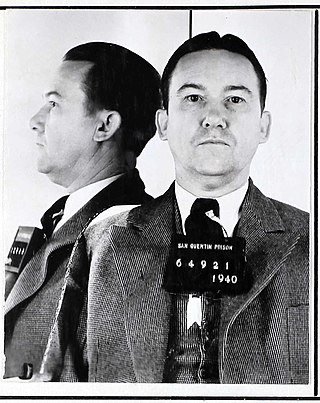
Major Raymond Lisenba also known as Major Lisby, Robert Sherwood James, "Rattlesnake James" or the Rattlesnake Murderer, was the last man to be executed by hanging in California. He was charged with murdering his wife, Mary Emma Busch, to collect her life insurance benefit. Per the Associated Press, Busch was the last of James' six wives. He was suspected of killing his fourth wife, Winona Wallace, and his nephew, Cornelius Wright, to collect on life insurance benefits. He was also convicted on three counts of sexually abusing his niece, Lois Wright.

William Joseph Mills was an American jurist who served three terms as the chief justice of the New Mexico Territorial Supreme Court and as the nineteenth and final Governor of New Mexico Territory.
Paul Kohner was an Austrian-American talent agent and producer who managed the careers of many stars and others—like Ingrid Bergman, Maurice Chevalier, Marlene Dietrich, Greta Garbo, John Huston, Liv Ullmann and Billy Wilder—of the golden age of Hollywood, especially those who came from Europe before World War II. He was married to the Mexican-American actress, Lupita Tovar. His brother was Frederick Kohner, a novelist and screenwriter, his daughter was the actress Susan Kohner. His grandsons are the filmmakers Chris Weitz and Paul Weitz.

Reginald Harry Barlow was an American stage and screen character actor, author, and film director. He was a busy performer in Hollywood films of the 1930s.
Malcolm Stuart Boylan was an American screenwriter, writer, and founder of the U.S. Coast Guard Auxiliary.
Ralph Carl Ceder was an American film director and writer. He directed 88 films in the 1920s, 1930s, and 1940s.
Ling Meng is a Chinese plant biologist in the Department of Plant and Microbial Biology at the University of California, Berkeley. She is currently a Postdoctoral Fellow at Lawrence Berkeley National Laboratory. She is best known for discovering a novel form of cellular communication in plants. Thioredoxin, while known to play an important role in biological processes such as cellular redox, is not fully understood in function. Meng's work at Berkeley has suggested that thioredoxin h9 is associated with the plasma membrane and is capable of moving from cell to cell through two important protein post-translation modifications: myristoylation and palmitoylation. She is the first to connect thioredoxin with the plasma membrane.

Minnette Ella Gersh Lenier was a teacher and professional magician who used stage magic to improve students' reading and learning skills.
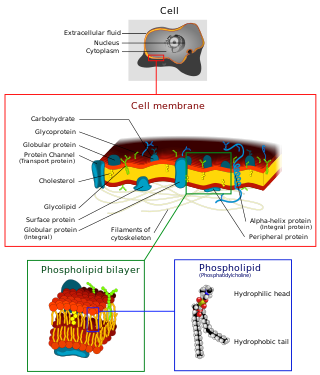
The cell membrane is a biological membrane that separates and protects the interior of a cell from the outside environment. The cell membrane consists of a lipid bilayer, made up of two layers of phospholipids with cholesterols interspersed between them, maintaining appropriate membrane fluidity at various temperatures. The membrane also contains membrane proteins, including integral proteins that span the membrane and serve as membrane transporters, and peripheral proteins that loosely attach to the outer (peripheral) side of the cell membrane, acting as enzymes to facilitate interaction with the cell's environment. Glycolipids embedded in the outer lipid layer serve a similar purpose.
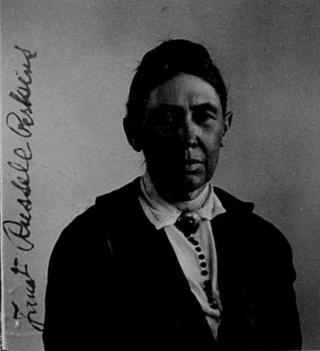
Janet Russell Perkins was an American-born botanist. Perkins authored 191 land plant species names, the tenth highest number of such names authored by any female scientist.
Hans Josef Schumm(néJohann Josef Eugen Schumm; 2 April 1896 Stuttgart – 2 February 1990 Los Angeles) was a German-born-turned-American actor, notably, a prolific and critically acclaimed Hollywood screen character actor who appeared in some 95 films – including a co-starring villainous role in a 12-episode serial. He also appeared in 15 TV productions and several stage productions, including one on Broadway. Except for about ten cinema productions, Schumm's body of work in cinema and television was filmed in the United States. On stage and in film, he is credited as Hans Josef Schumm or simply Hans Schumm; but in seven films, he is credited under the pseudonym André Pola — three in 1948, one in 1949, one in 1954, and one 1956. In his private life, he was known as Joseph Schumm and Johann J.E. Schumm.
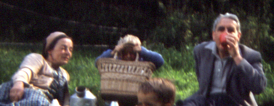
Rose Marie "Jane" Ingham was an English botanist and scientific translator. She was appointed research assistant to Joseph Hubert Priestley in the Botany Department at the University of Leeds, and together, they were the first to separate cell walls from the root tip of broad beans. They analysed these cell walls and concluded that they contained protein. She carried out experiments on the cork layer of trees to study how cells function under a change of orientation and found profound differences in cell division and elongation in the epidermal layer of plants.













